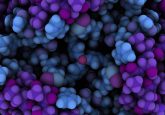Predictive glycosylation modeling for rational glycoengineering of biotherapeutics

New study published in Current Research in Biotechnology reports the development of a model for computational prediction of glycosylation of recombinant proteins, which would be of a very high value in the development of future biopharmaceuticals. We interviewed the author team led by Dr Nathan E. Lewis (University of California, CA, USA) to get insights on the background, significance and potential future applications of this important work.
Can you shortly introduce yourself?
At UC San Diego (CA, USA) I [Nathan Lewis; NEL] lead a team of outstanding students and researchers to unravel the intricate mechanisms in mammalian cells to better understand the processes involved in cell growth, cell communication and protein secretion. The work in this study was led by Chenguang Liang [CL] a PhD student in my group and Austin Wan-Tien Chiang [AWTC], a project scientist helping me lead many of our efforts in systems glycobiology. Our work has particular relevance in the biotechnology field, since the majority of the top drugs by sales are glycoproteins and there is a need to improve protein production while controlling the structures of the glycans on those proteins.
Why it is of interest to predict glycosylation and what are its applications in the development of biotherapeutics?
CL: A wide range of biopharmaceuticals are glycosylated with diverse glycan structures, which contribute to many critical attributes of the drugs. Developing cell lines that can produce the desired glycosylation patterns for biologics products is an essential step for quality control (QC), especially for biosimilars. Currently, QC for glycosylation requires extensive screening and glycomics analyses of engineered cell lines. This process is costly, laborious and requires researchers with highly expert knowledge. In contrast, predicting cell engineering impacts on glycosylation in silico allows researchers to quickly narrow down a large group of engineering targets prior to experimental screening and validation. Therefore, predicting glycosylation potentially shortens the timelines for both cell line development and quality control in development of biotherapeutics.
How challenging was the model development and its experimental validation, which was conducted in your recent work? Were there some steps that proved to be especially difficult or unexpectedly easy?
AWTC: The critical barrier lies in the complexity of the biosynthetic pathways that exist mostly unknown interactions between the enzymes. Another daunting challenge is the existence of many isozymes with slightly different substrate specificities. Our model addressed these challenges and enables us to predict glycosylation recombinant protein product, even for multi-gene knock-outs.
What are the strengths of the newly developed model and are there some down-sides of using it? How does it compare to other models?
AWTC: Most of the existing glycosylation models require a substantial number of kinetic parameters. Our strategy predicts glycosylation of multi-gene knock-outs on any recombinant protein product that would not require time consuming, laborious and costly wet-lab experiments for generating great amounts of single gene knock-outs on the same recombinant protein product.
CL: While kinetic models were shown to accurately fit to glycoprofiles, they are highly context-specifics and often require a priori knowledge or experiments to estimate enzyme kinetic parameters in different contexts. The intrinsic assumption of many kinetic models, such as quasi-equilibrium, is required for obtaining explicit solutions but may not accurately reflect the complexity of interactions between glycosyltransferase and the highly dynamic nature of Golgi cisterna, where each glycosyltransferase (GT) resides. Therefore, understanding the intrinsic catalytic capabilities of glycosyltransferase isozymes and their interactions is important for developing generalizable, predictive glycosylation models. With the comprehensive datasets from previous studies, our low-parameter Markov model framework only requires glycomics data and no kinetic data to quantify the impact of each GT isozyme knock-outs. We showed in our study that such quantification of impacts from a single drug Enbrel could even be used to predict the impacts on glycosylation of three other drugs, all of which have distinctive glycoprofiles. Therefore, the advantage of Markov model lies in its ability to disentangle the intrinsic catalytic capability of a single GT isozyme beyond the kinetics of a pooled family of GT isozymes and simple reaction rules. At current stage, our model framework does not consider the impact of monosaccharide concentrations and will require further modification to account for other cell line and media heterogeneity.
What are the most important potential future applications of the new model?
AWTC: Our method provides a valuable approach for rational glycoengineering of biotherapeutics. Specifically, researchers can use these methods to identify the optimal glycoengineering strategies (a combination of glycosyltransferase mutations) to obtain a specific glycoprofile with desired glycosylation on any new biotherapeutic of interest. Then, the biopharmaceutical manufactures could mutate (e.g., knock-in, knock-out, or knock-down) these glycosytransferases on CHO cells to produce desired glycoengineered biotherapeutics. Finally, these glycoengineered biotherapeutics could be licensed to use.
CL: We would like to include all known mammalian glycosylation reactions and expand the modeling framework to other types of glycans, such as O-glycosylation. We further hope to use this expanded modeling framework to study a broader range of glycobiological problems such as the change of glycosylation in cancers and other pathological developments, in addition to its currently intended application in biotherapeutic productions.
What are your further work directions?
NEL: In my lab this work is just one step in a larger program wherein we are developing computational tools to guide our efforts for glycoengineering and other goals to more thoroughly unravel the roles of glycans on diverse proteins. For example, we have ongoing studies wherein, with collaborators, we are studying the cellular impact of knocking out diverse genes involved in glycosylation. We are also looking into the development of tools that make it easier to study glycosylation, including software tools that simplify the apparent complexity of glycans and wet-lab tools to make it easier to study. Some of these include glycomics tools and analysis algorithms. In other cases we are identifying transcription factors that regulate glycosylation. With collaborators we are also producing diverse glycoforms of proteins to gain insights into when and how changes in glycosylation impact protein function and biological responses. Insights from these studies should lead to improved drugs and better understanding of disease mechanisms.
Considering the overall recent scientific and technological advances, what are your forecasts for future developments and applications in this area?
AWTC: Nobody has developed a computational method that can predict the glycoprofiles from multi-gene mutants producing distinct glycoproteins. Our team is the first to provide glycosylation models that could successfully predict glycoprofiles of four different glycoengineered therapeutics (i.e., Rituximab, erythropoietin, Enbrel, and alpha-1 antitrypsin) produced in CHO cells. In the near future, leveraging predictive computational glycosylation models would be greatly appreciated to glycoengineering of biotherapeutics. There is ample opportunity for engineers and scientists to contribute their approaches and tools to further facilitate the coming age of rational glycoengineering.
For our readers who are interested to learn more about the discussed topics – would you like to recommend some valuable sources for obtaining further information?
NEL: It is becoming increasing clear that glycobiology is essential in our understanding of biological systems, ranging from the function of individual proteins to tissue homeostasis. A few years ago the National Academies published a lengthy report on the importance and impact of glycomics and glycoscience. Furthermore we and others are finding it core to host-pathogen and host-microbiome interactions. Its complexity, however, is highlighting the need for systems biology approaches to be deployed, including modelling as we have done here, and advances in glycoproteomics and many other technological fields. Further relevant references are:
- Spahn PN, Hansen AH, Kol S, Voldborg BG, Lewis NE. Predictive glycoengineering of biosimilars using a Markov chain glycosylation model. Biotech. J. 12(1600489) (2017).
- Spahn PN, Hansen AH, Hansen HG, Arnsdorf J, Kildegaard HF, Lewis NE. A Markov chain model for N-linked protein glycosylation – towards a low-parameter tool for model-driven glycoengineering.Eng. 33, 52–66 (2016).
- Spahn P, Lewis NE. Systems and methods for predicting glycosylation on proteins. WO Patent 2016187341 A1 [Accessed 13 May 2020].
- Hefzi H, Ang KS, Hanscho M, Bordbar A, Ruckerbauer D et al. A consensus genome-scale reconstruction of Chinese hamster ovary cell metabolism. Cell Systems. 3, 434–443 (2016).
- Bao B, Kellman BP, Chiang AWT, York AK, Mohammad MA, Haymond MW, Bode L, Lewis NE. Correcting for sparsity and non-independence in glycomic data through a system biology framework. bioRxiv, doi:10.1101/693507 (2019).
- Gutierrez JM, Feizi A, Li S et al. Genome-scale reconstructions of the mammalian secretory pathway predict metabolic costs and limitations of protein secretion. Nat. Commun. 11(68) (2020).
- Weiss RJ, Spahn PN, Chiang AWT et al. ZNF263 is a novel transcriptional regulator of heparin and heparan sulfate biosynthesis. PNAS. doi:10.1073/pnas.1920880117 (2020).
- National Research Council. Transforming glycoscience: a roadmap for the future. Washington, DC: The National Academies Press. (2012).
- Szymanski CM, Schnaar RL, Aebi M. Bacterial and Viral Infections. In: Varki A, Cummings RD, Esko JD, et al. Essentials of Glycobiology. 3rd edition. Cold Spring Harbor (NY): Cold Spring Harbor Laboratory Press. (2017).
- Monedero V, Buesa J, Rodríguez-Díaz J. The Interactions between host glycobiology, bacterial microbiota, and viruses in the gut. 10(2), 98 (2018).
Interviewer: Atanas G Atanasov, leading scientist interested in molecular medicine and digital health, PI of LBIDHPS, Editor-in-Chief of CRBIOTECH and Executive Director of INPST. Social media contacts: Twitter, LinkedIn, Facebook.
Our expert opinion collection provides you with in-depth articles written by authors from across the field of bioanalysis. Our expert opinions are perfect for those wanting a comprehensive, written review of a topic or looking for perspective pieces from our regular contributors.
See an article that catches your eye? Read any of our articles below for free.






